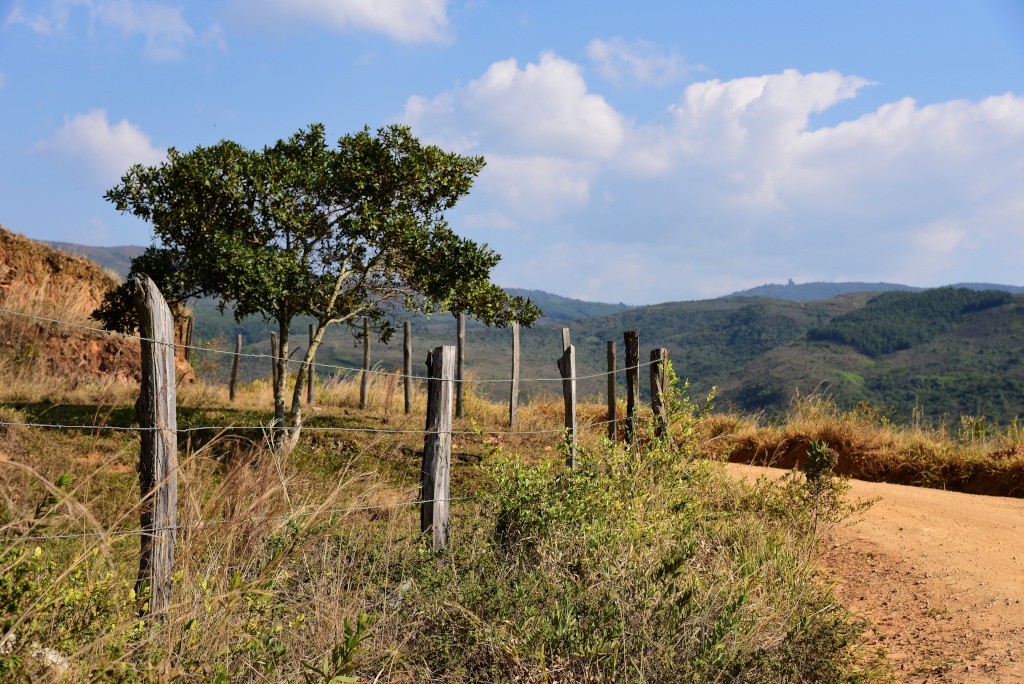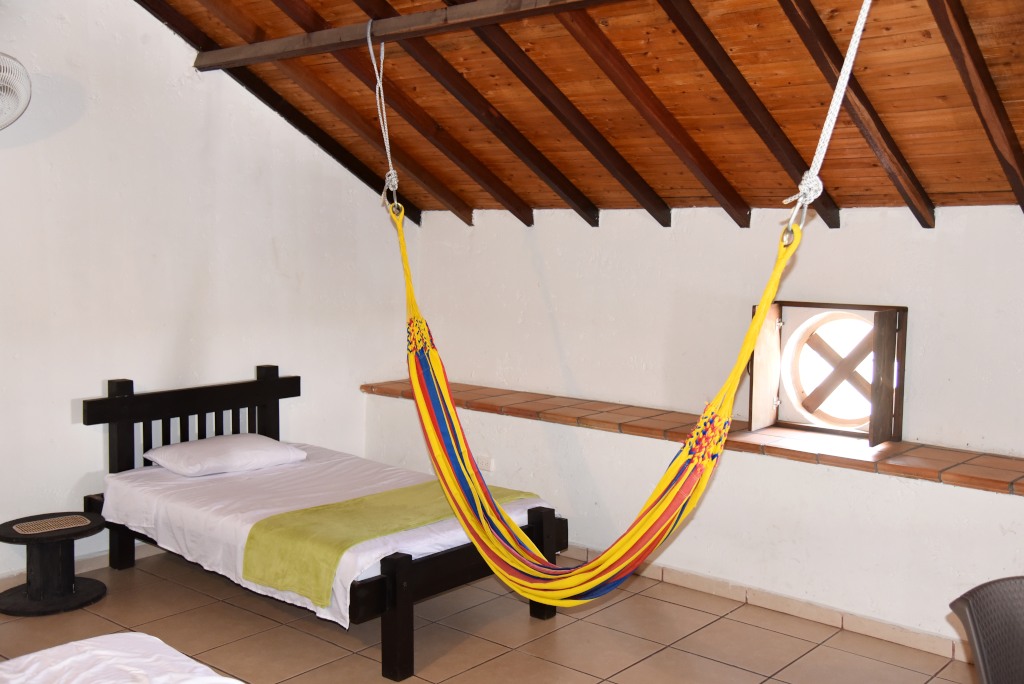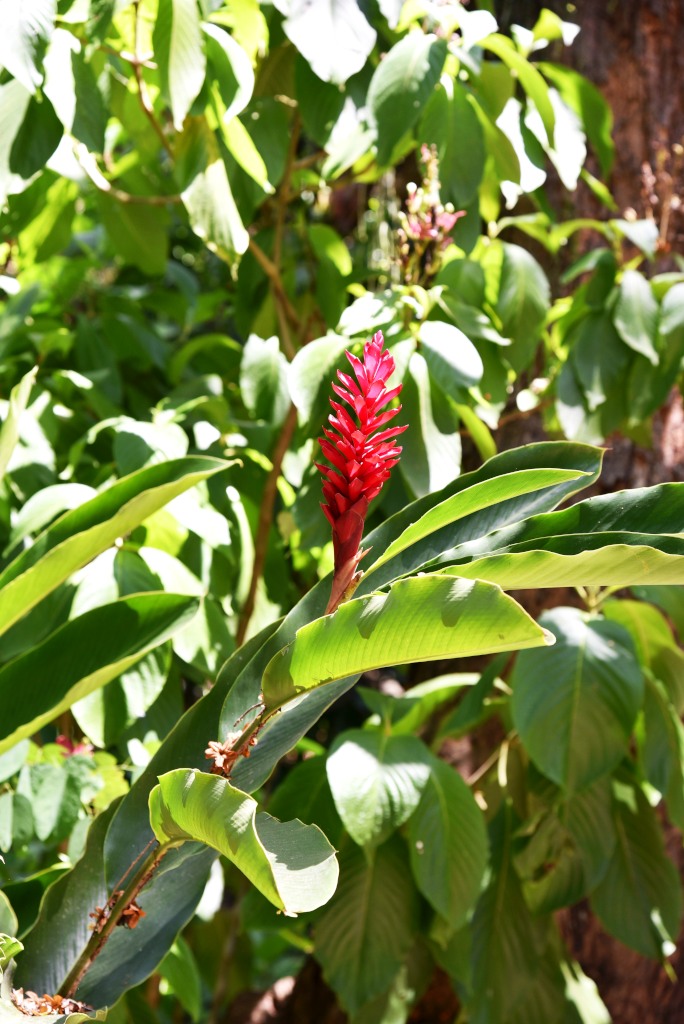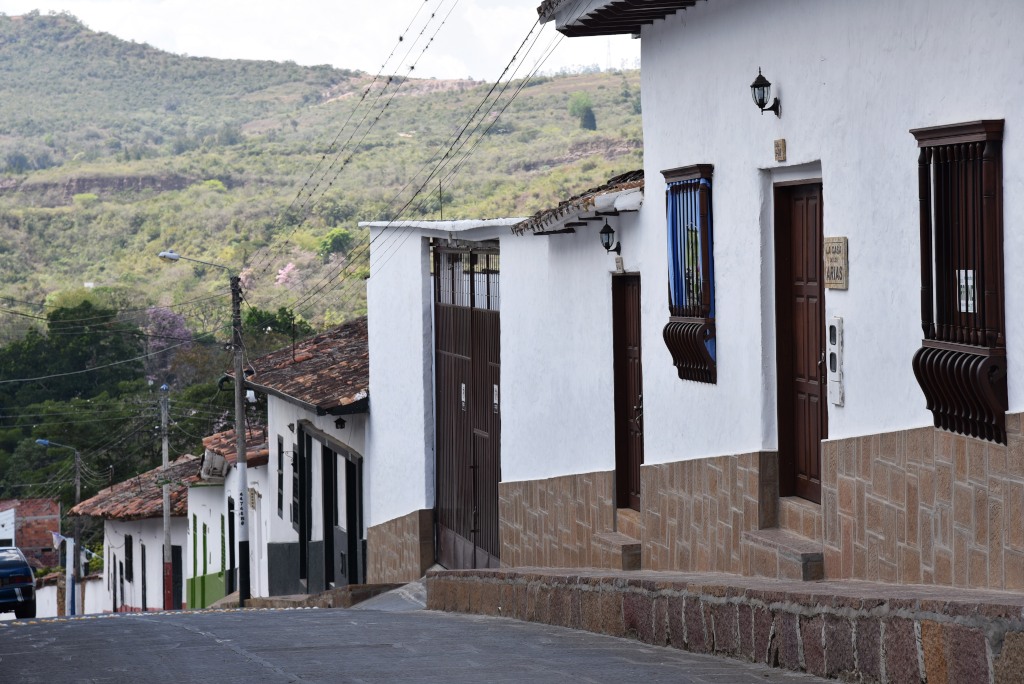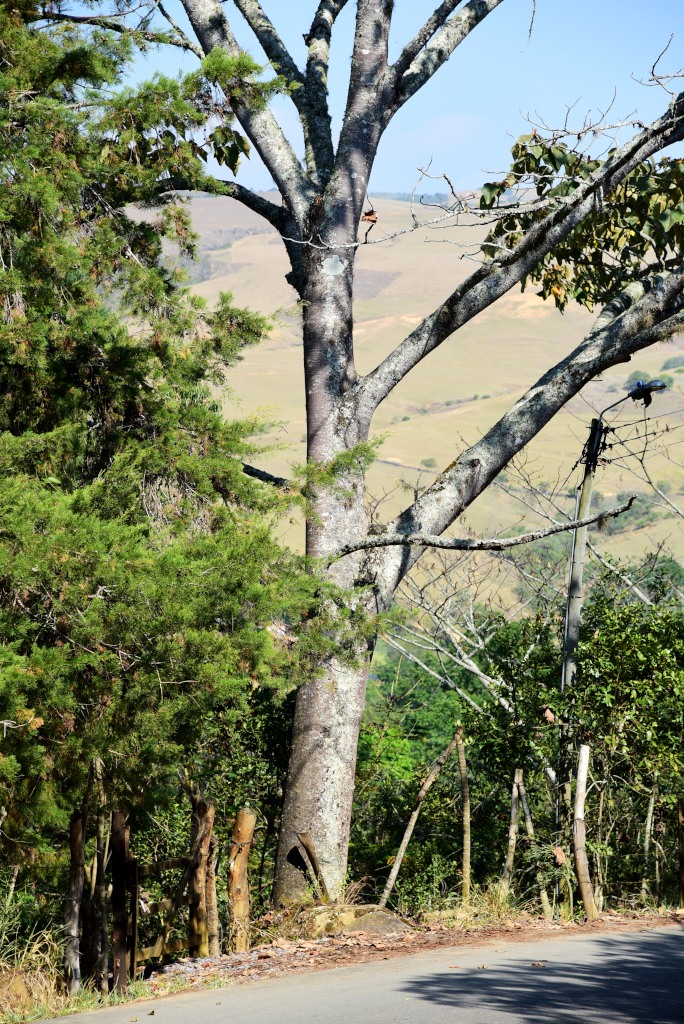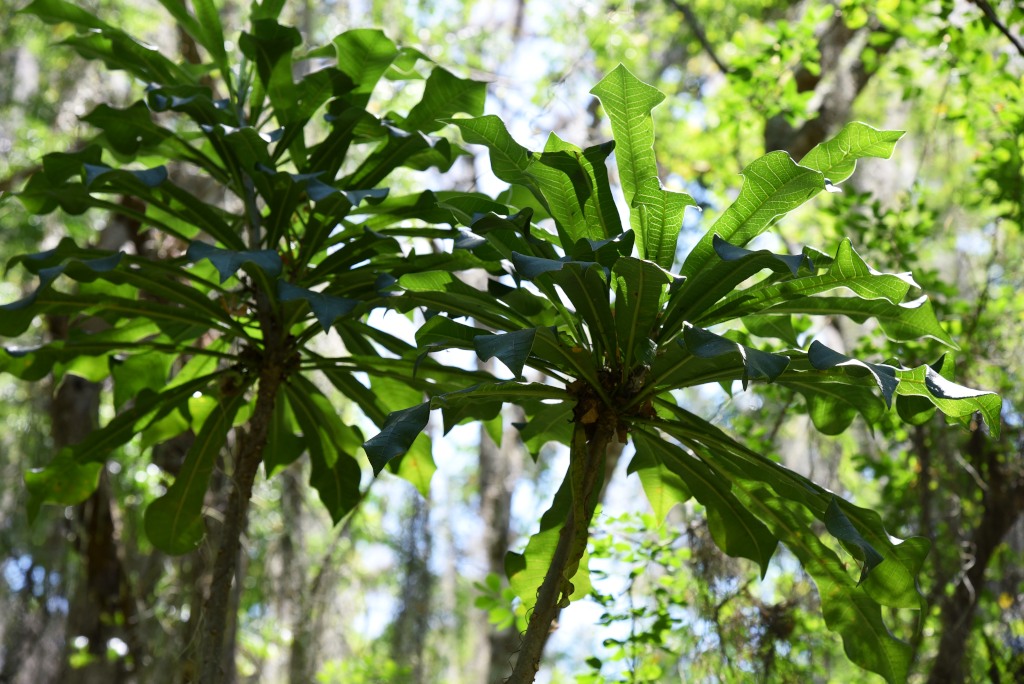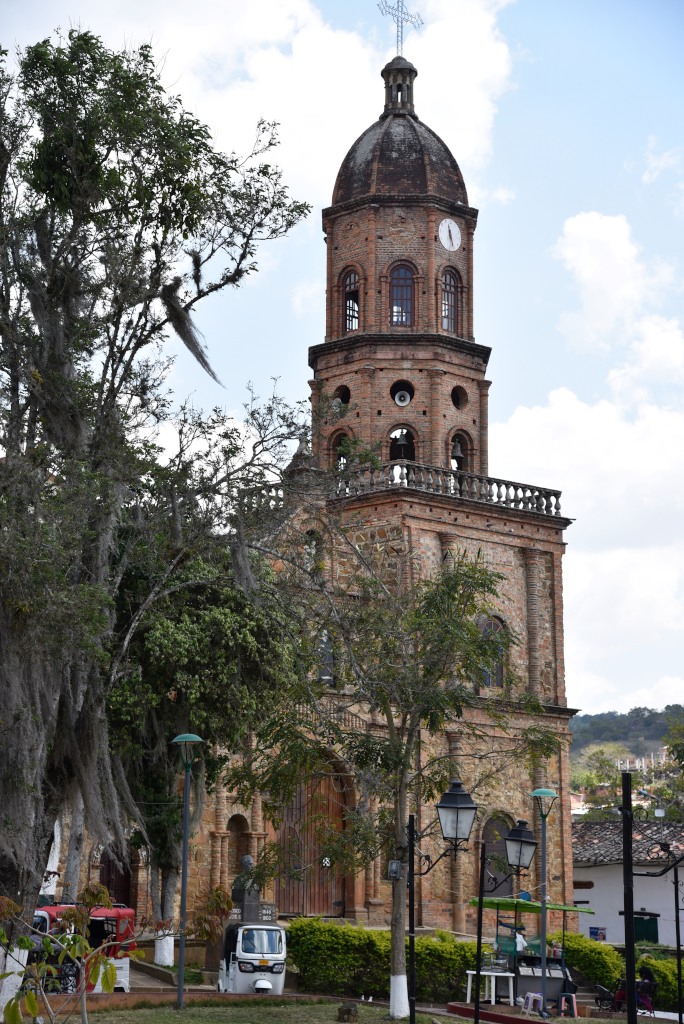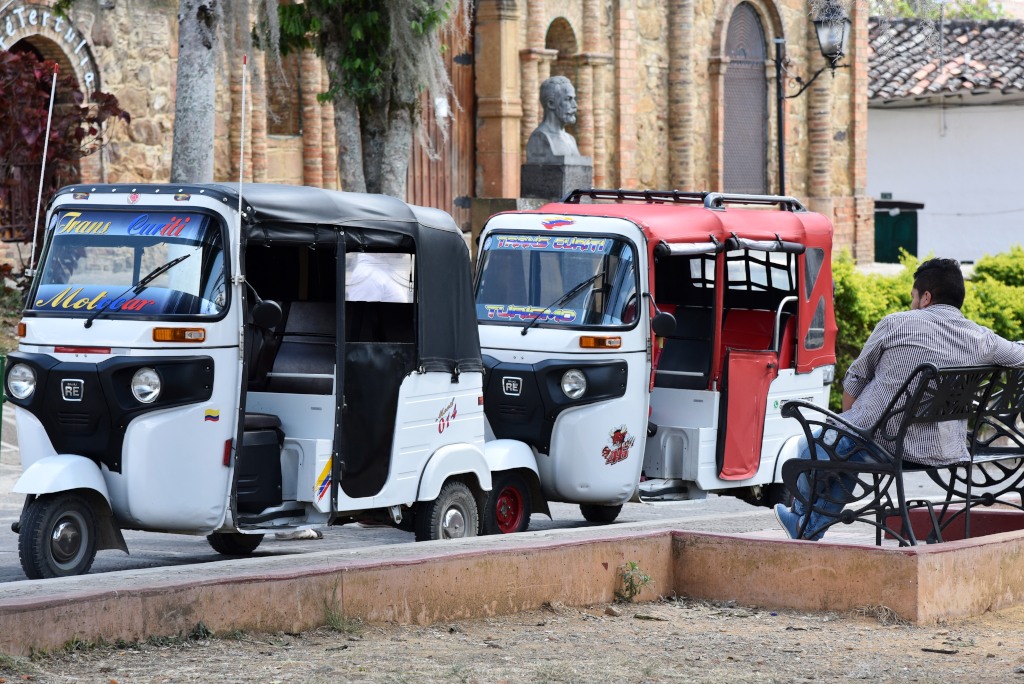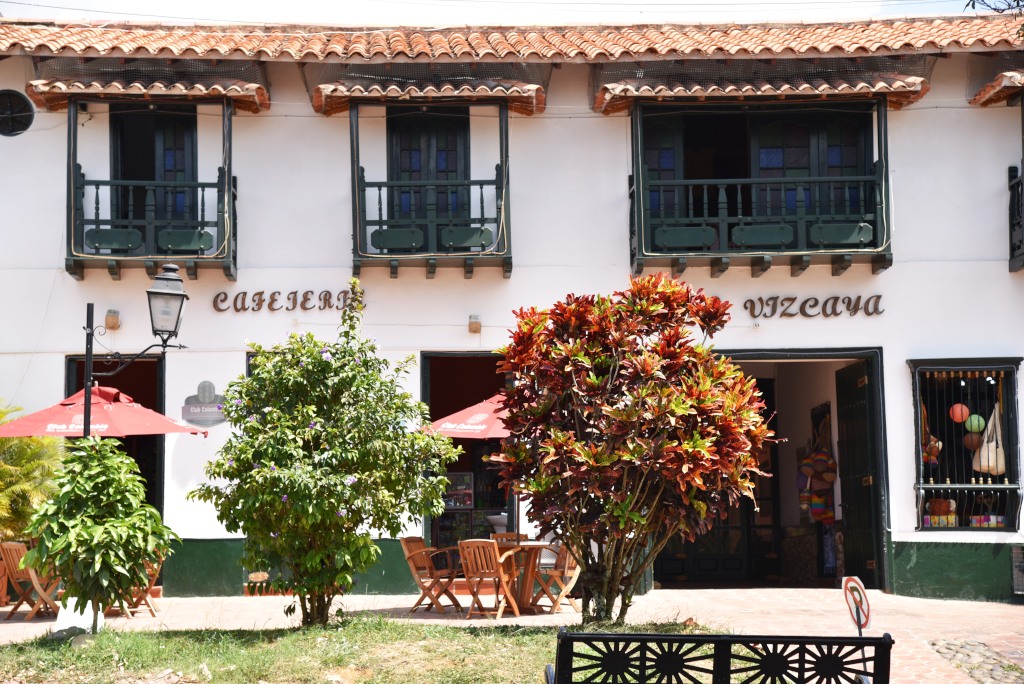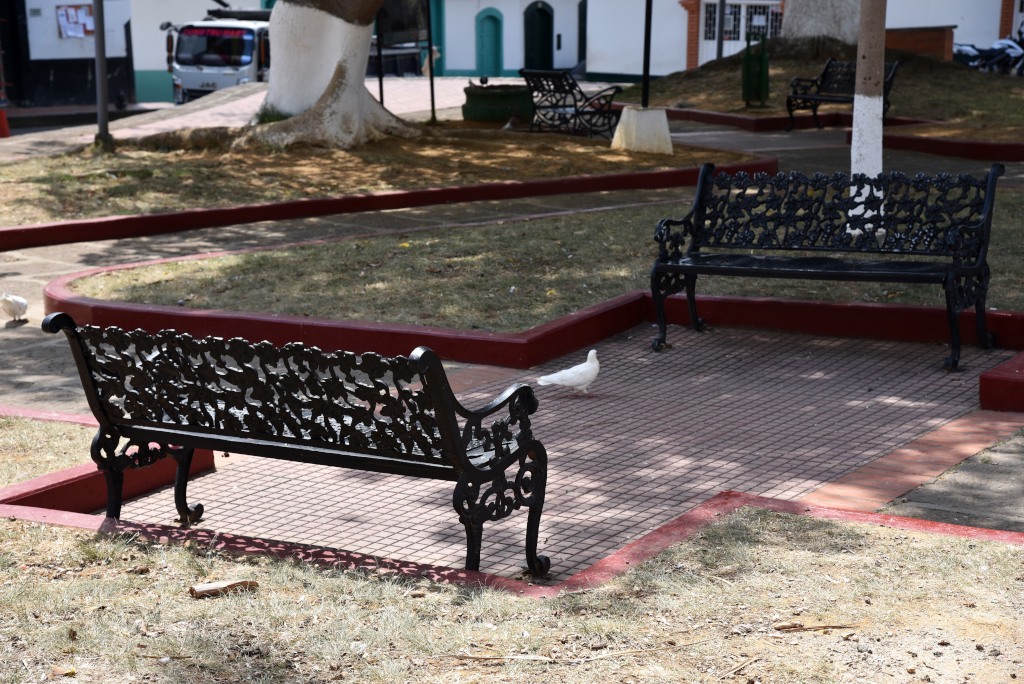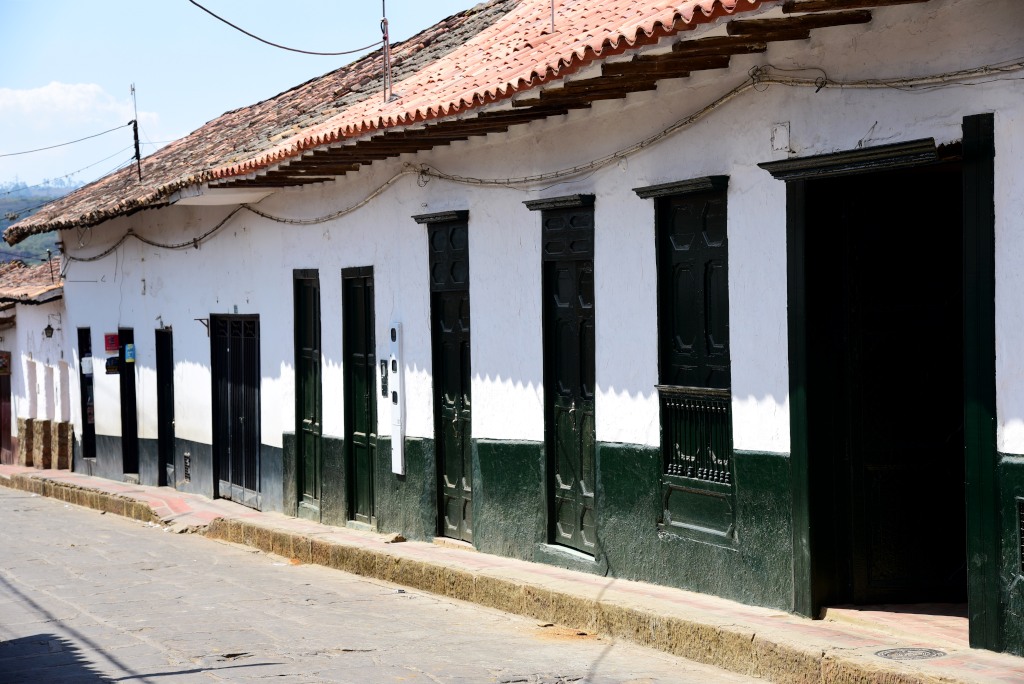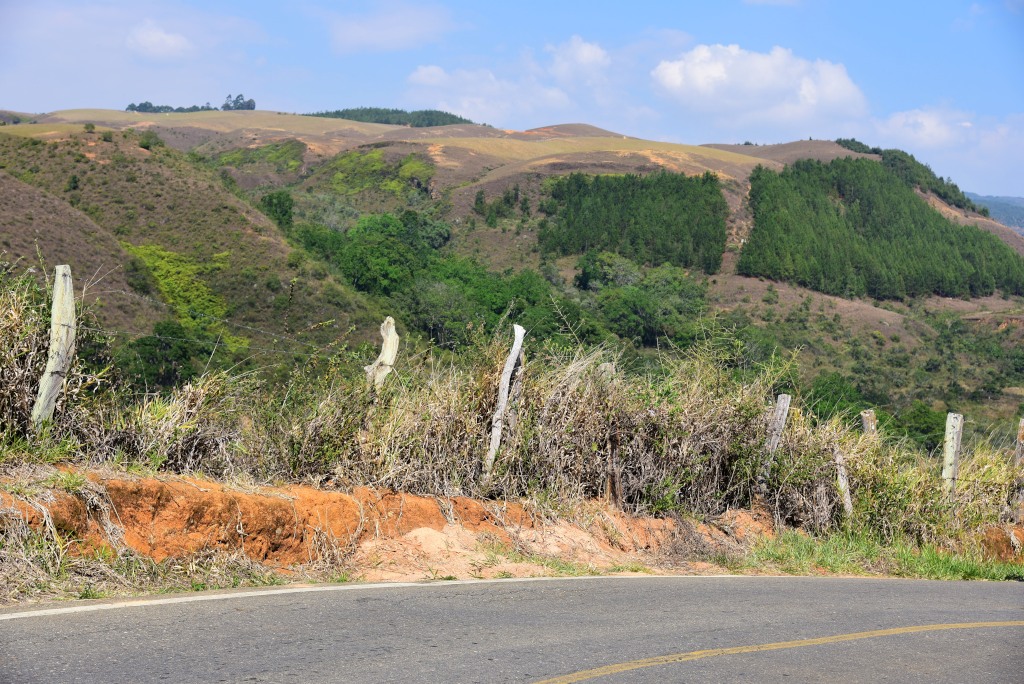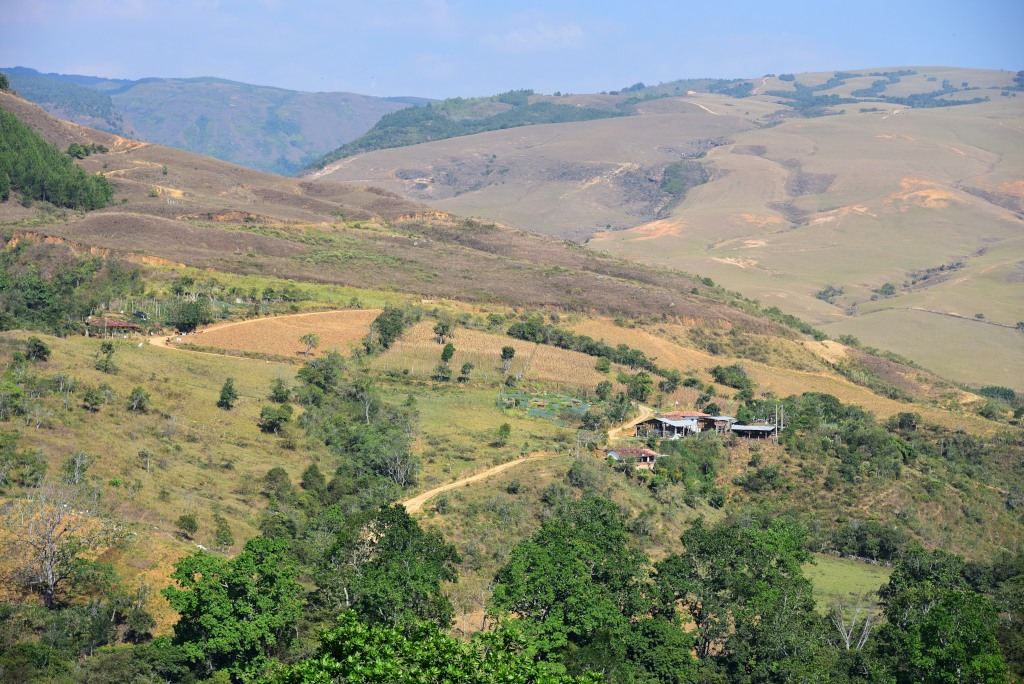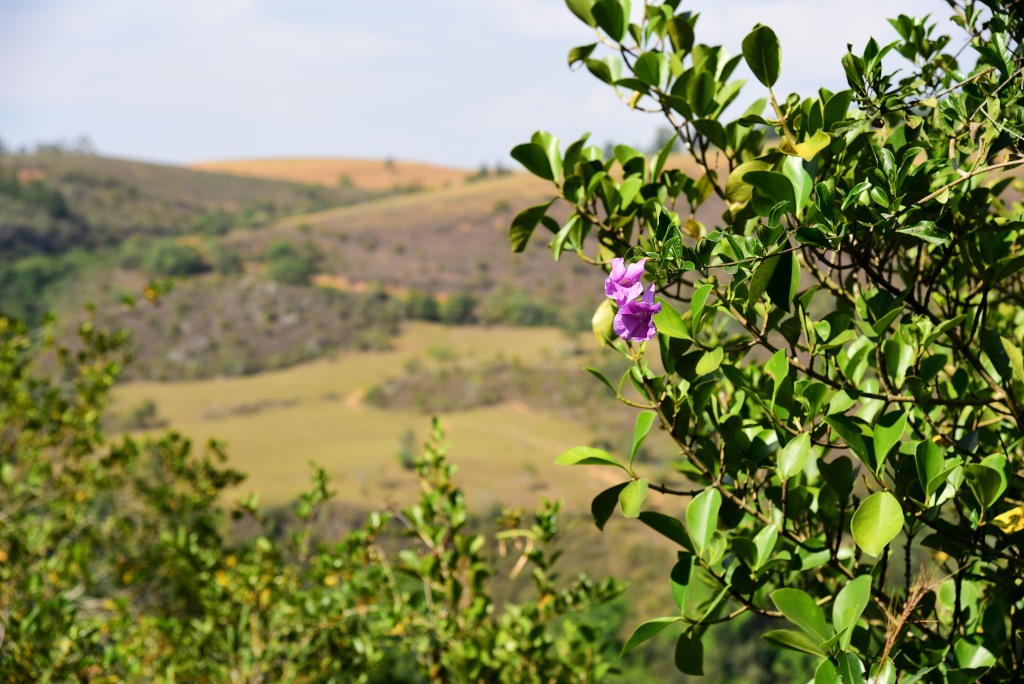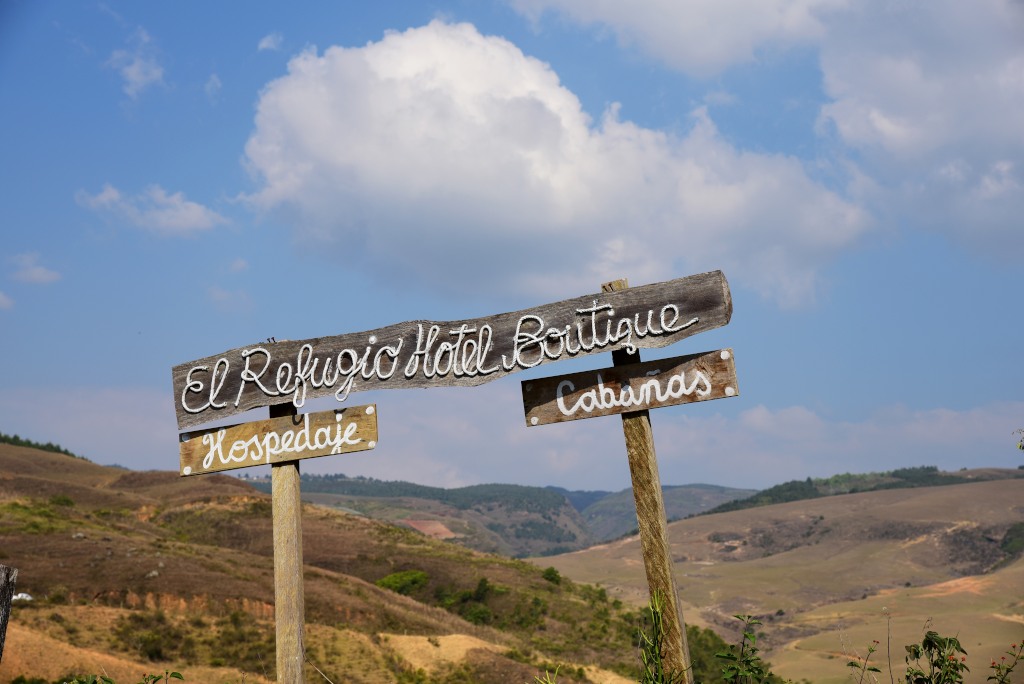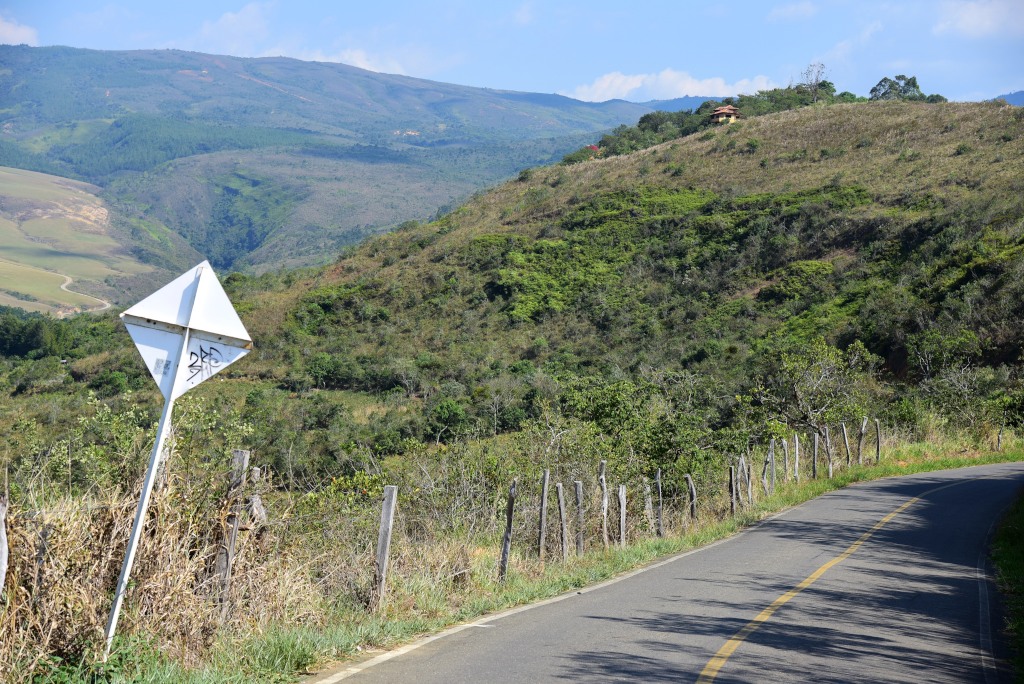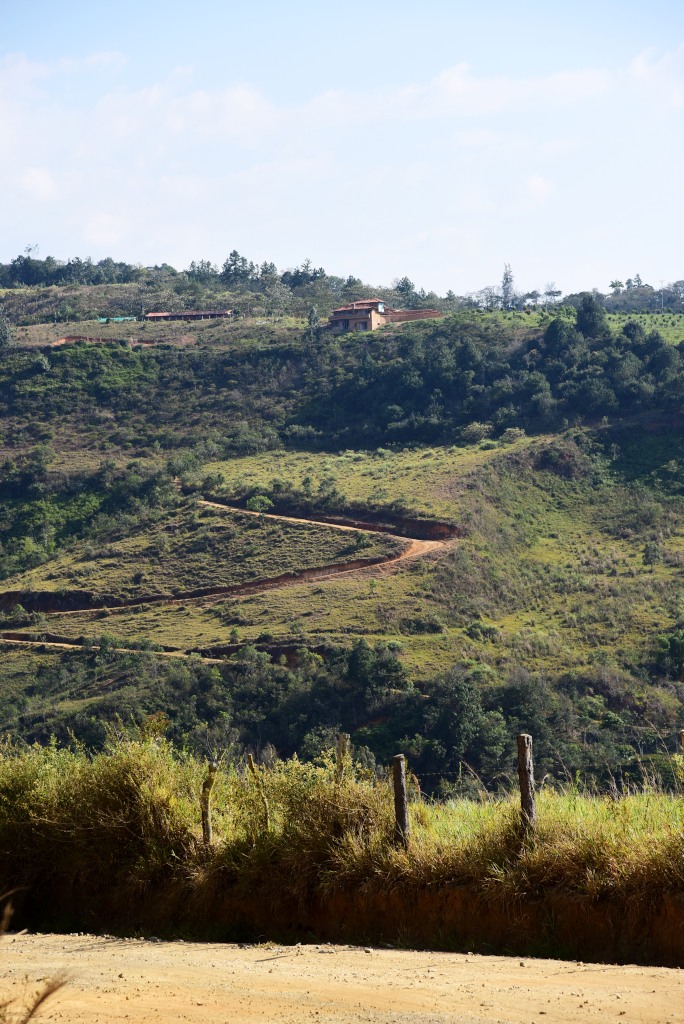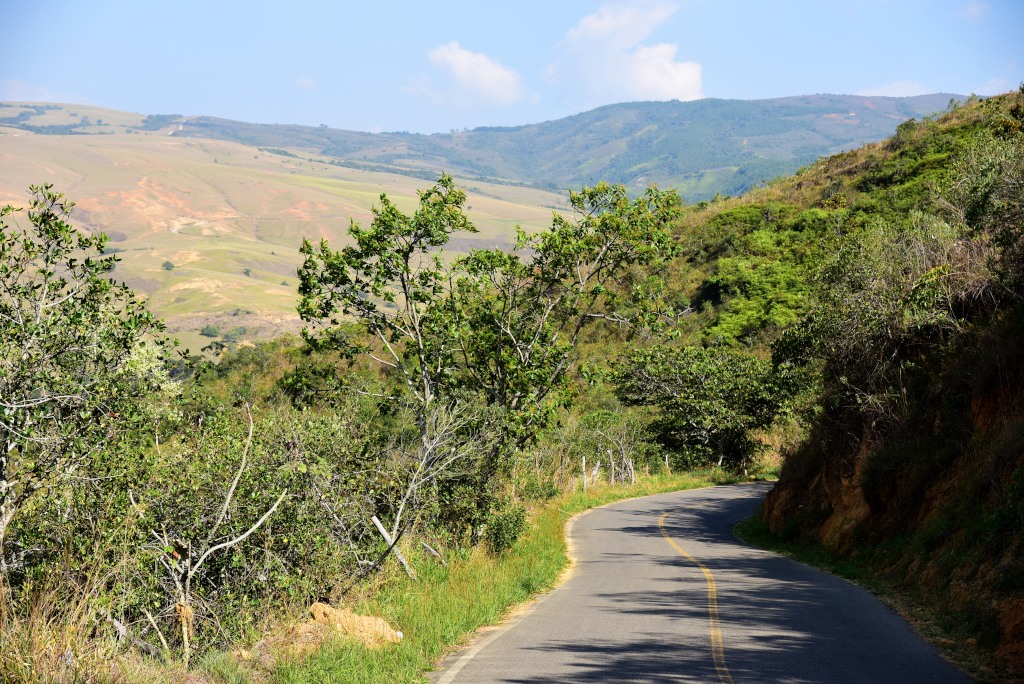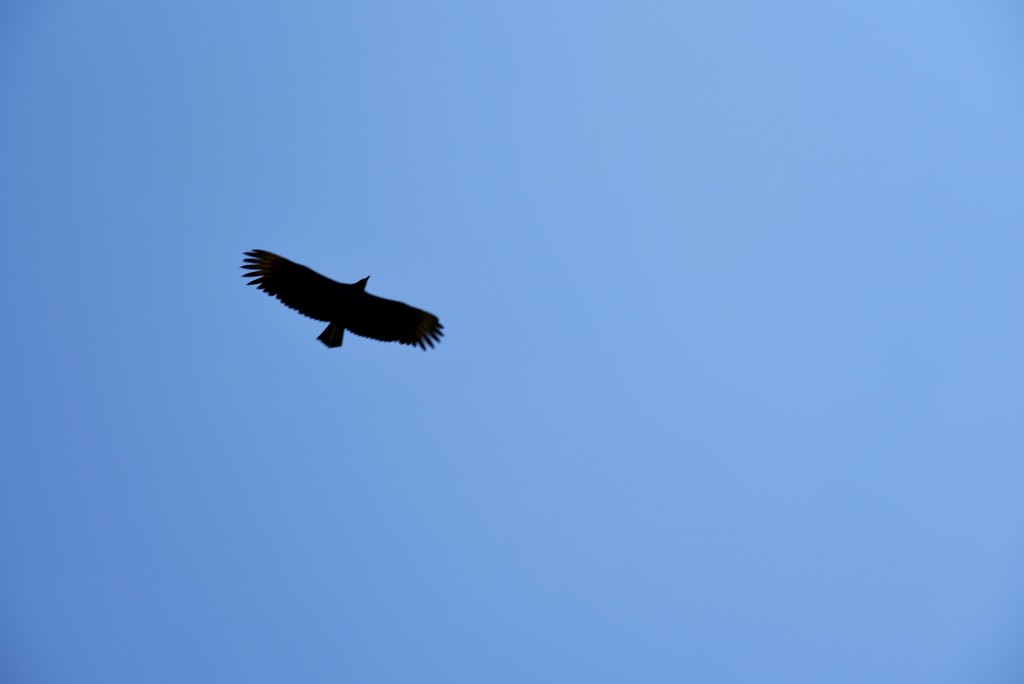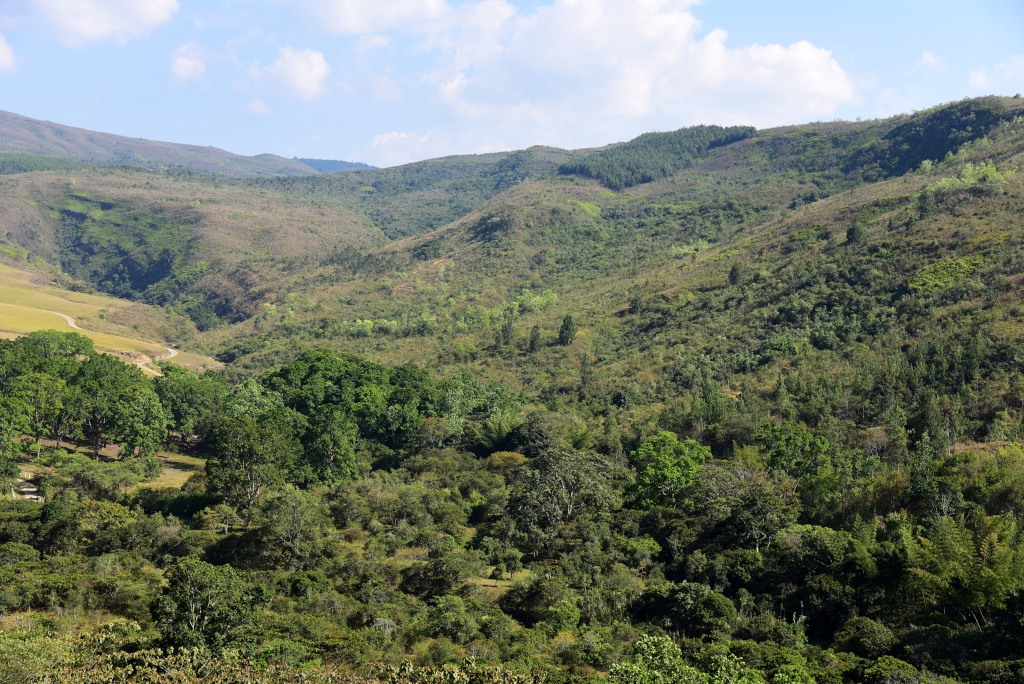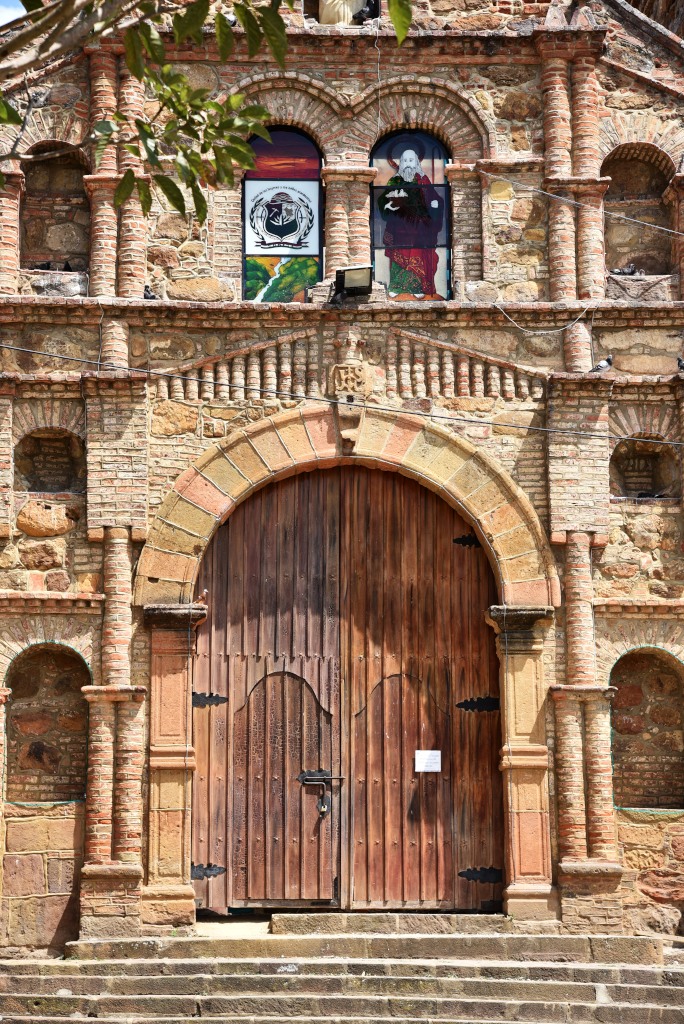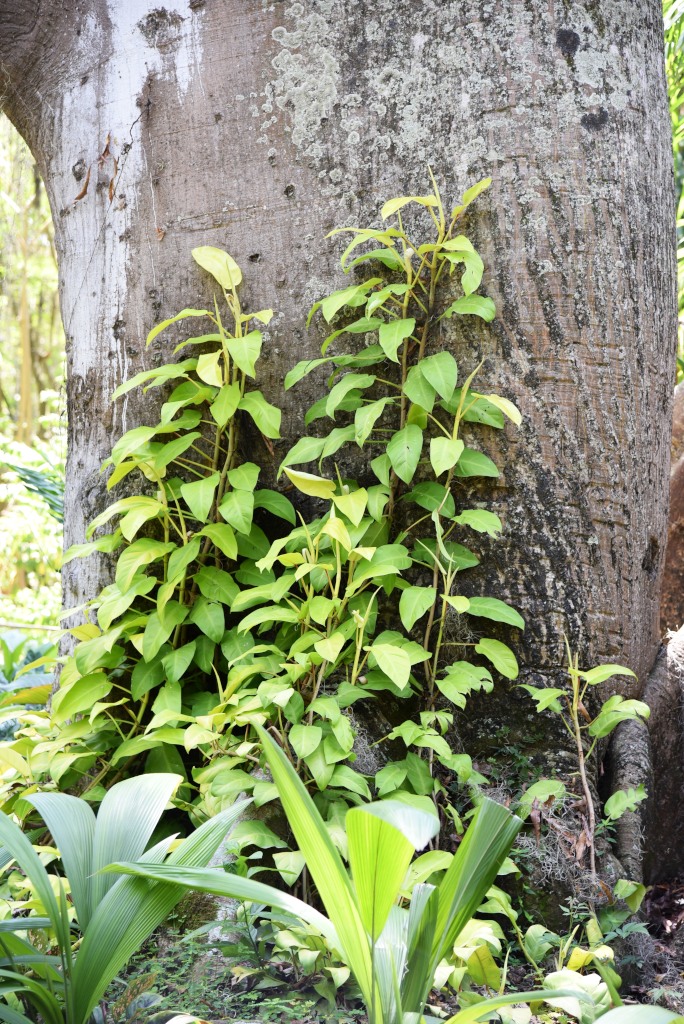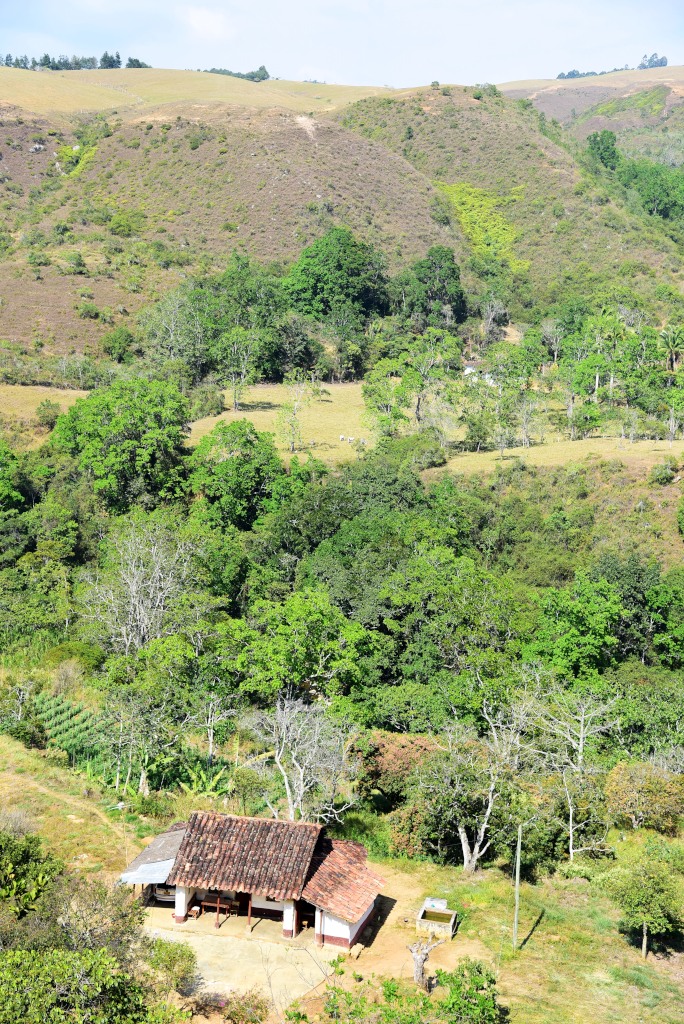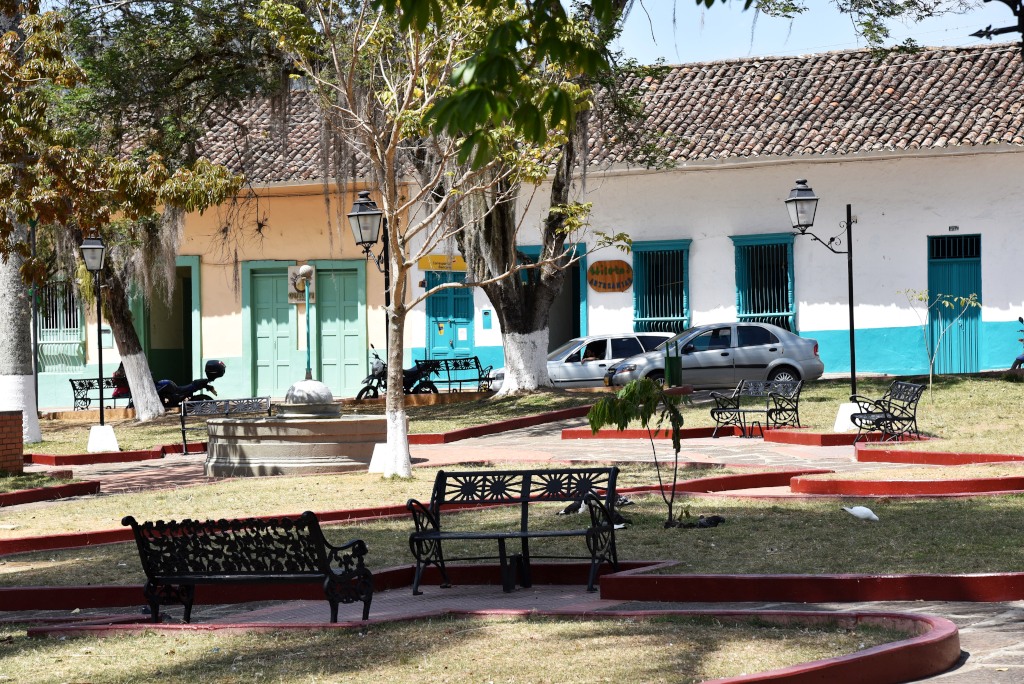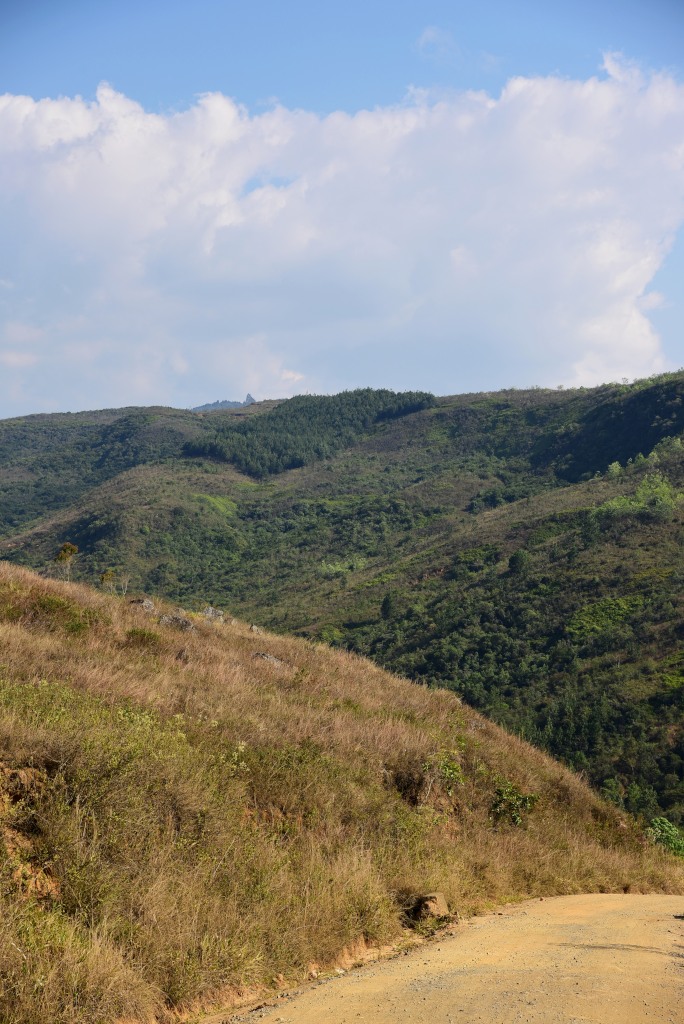February 8th, 2018
Copious amounts of alcohol in tandem with a cold don’t do wonders for the body, hence the worn-out feeling when I finally do drag myself out of bed at a very late 8:20 am. Back home, that would be a record for early, but here it is a record for late. The echo of loud engines has been invariably rousing me from my sleep, but not enough to actually drag me out of my bed.
And when I do start moving, my first destination is the computer, to take care of mail and messages, and continue with the day’s writing. The wifi connection is lousy, as usual: it is increasingly apparent that outside of Bogotá (and probably other large cities), internet services are substandard.
I had big plans for the day, visiting several different destinations in the vicinity of San Gil, but these plans not surprisingly will not come to fruition …
I leave the comfort of my room to eat a breakfast of quinoa granola with the nutritional powder made from local ingredients, as well as the contents of a now rotting papaya. So much for leaving fruit tied up in a plastic bag in the heat …
I have to buy some razor blades at the huge supermarket in Centro Comercial El Puente. There is no way I want to be walking around unshaven – it’s a major peeve of mine. For some reason the Café Loma Verde is closed for repairs, the safe placed outside with the door open to show that there is no cash on the premises.
I continue for a rich and strong coffee to one of the landmark cafes on the town’s central plaza, the Cafe Polita. The coffee here is really incredibly good. The place is a sanctuary for the aging political cadres, academics and landed gentry. The colours are dark and the heavy wood furniture is ubiquitous. The walls are covered with gaudy paintings the likes of which used to be sold in the day on suburban parking lots, but here somehow achieve a substantial amount of charm.
And now to the local bus station just after noon, followed by the town of Curití to the northwest. A complicated and lengthy departure ensues, largely because the streets are so narrow that congestion invariably occurs. We follow the road weaving along the river, rising gradually higher in the valley, the verdant canopy overhanging the road, breaking occasionally to reveal farming plots and grazing land.
I limit my visit to Curití to a walkabout around the plaza, as all of the small towns I have visited in the region seem to appear pretty much the same. Some minor comments about the architecture: some of the buildings on the plaza are painted in bright colours, adding variety to what is often visual monotony.
As always, very few humans are in evidence, other than a few crones making their presence known in doorways or crawling down the cobblestone street at very low speed. Here as well there are tuktuks, parked in front of the cathedral, presumably for the purpose of transporting people to Pesceradito. I probably would have been better off by chosing to travel in a tuktuk as well, but the idea of walking two mere kilometres just didn’t seem like very much. Despite being more of the same, the town is cute, and I would be just as happy to sit slumped on a bench and watch the day pass by, as the few individuals already present on the plaza benches are doing.
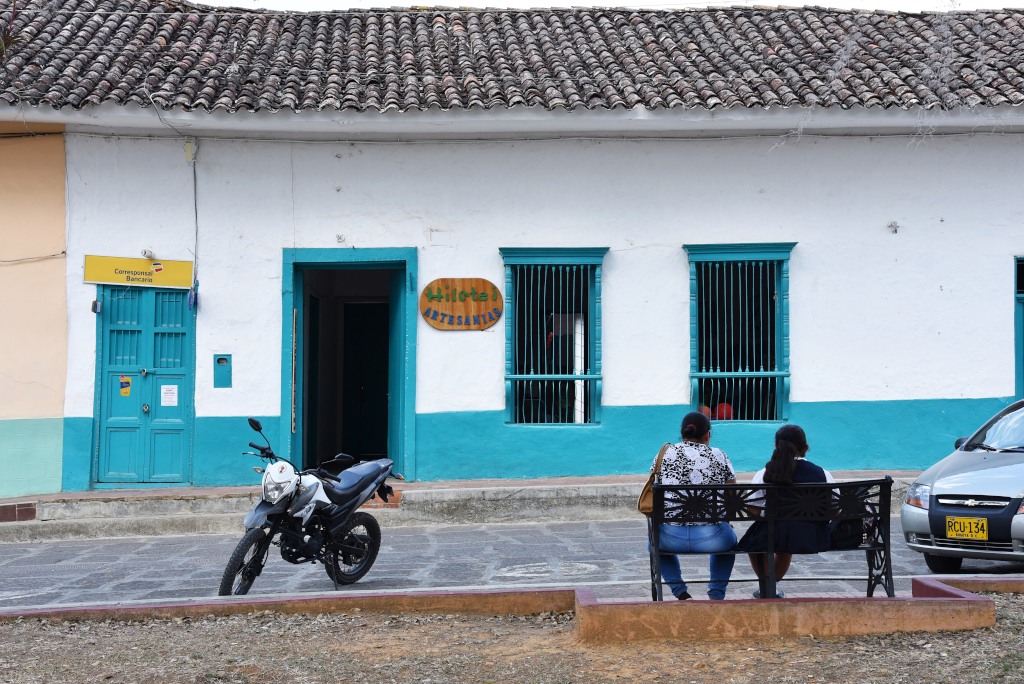
The side streets are home to single story adobe and terracotta structures, the usual smattering of stores. A reasonably good almuerzo in one of the few restaurants in town, then lumbering in an overfed and increasingly tired state down the road towards Pesceradito, the road gently weaving uphill.
Curití is apparently famous for its work with the fique fibre. The few artesanry stores open display all manner of figurines, dolls, mobiles, and other small whimsical objects made of the woven, straw-like material, all largely inappropriate for traveling longer distances in constrained circumstances.
The visitors to San Gil make their mark here as well, however, considering the relatively underwhelming attraction, it doesn’t seem to make a lot of sense. The landscape is verdant and pleasant to look at, tuktuk upon tuktuk and copious motorcycles passing by, loaded with expectant visitors. Pesceradito must be a gem in the raw, or so I think en route to what turns out to be nothing more than a shallow pozo with a number of locals wading lethargically in the pool, and an empty storefront blaring vallenato from loudspeakers in front.
There are only a few parties that pass by on foot, including an older Belgian couple. I drag them through the formalities of conversation until we get to the subject of Madagascar, an island that he originates from and visits regularly, and can’t say enough good about. Yes, it is very poor, but the island is amazing, virgin cultural territory. Antinanarivo is a horrible place, but the rest of the island is primitive, rich in its local identity and safe. Travel is indeed very difficult and tiring in the country due to the extremely poor road conditions. So now I am again motivated to visit Madagascar!
The road has reached a crest, exposing vistas of the surrounding green hillsides. The sun beats down on me as vultures circle overhead. Following an arcing trajectory exposing views of the rolling landscape extending out from Curití, the road descends again, finally bringing me to the pozo that seems to be on the flank of Curití.
The dirt road descends to a set of partially shaded shallow pools in which a handful of locals lounge lethargically. On the other side of the road, a campground, parking lot, and store, vallenato music emanating at full volume from a pair of loudspeakers, and an outdoor stadium above. The road begins rising again, but there is no sign of what I presume to be Pesceradito.
There is no signage, no evidence of any settlement, in fact, virtually no sign of life as the road rises higher, the hillsides I descended across from Curití now visible across from me as I rise to the crest of the opposing side of the valley. I am becoming increasingly tired – and upset – at this pointless journey, what with the heat of the day, growing exhaustion and dehydration.
I stop two young women puttering by on a motorcycle. Where the hell is this place, anyway?
Pesceradito? You passed it! It’s the pozo down below. Seriously? Why would anyone be instructed to walk from Curití to see that inconsequential place. I begin fuming at the recommendations the manager of my hotel in San Gil had given me. But then I also have to confess I don’t quite remember what he told me about the place, either!
There may be some back trail leading back to the pozo, but it could be rough, they warn me. Ruefully, I turn around and plod back down towards the valley and the pozo, the only consolation that I am going downhill again, and different views are offered of the surrounding countryside. I had planned on visiting the town of Socorro later on in the afternoon, but can’t see that happening now.
Trudging back up to the rise where I met the Belgians, very little traffic is in evidence other than a few motorcycles that putter uphill, presumably coming from fincas deep in the hills beyond Pesceradito. The area has a resort quality, given the presence of the pozo and several spa-like retreats set back some distance from the road between Curití and the pozo. The area certainly has its beauty, although it would be nowhere as dramatic as the landscape I saw in Boyacá.
The walk back is hardly overwhelming: once I have reached the highest point of the road, it weaves back down into the tendrils of housing that emanate from the town of Curití. A few dogs bark at me, but are too lazy to otherwise get up and take any further action. The somnolent town doesn’t seem much more inspiring than when I left it.
I could spend some time exploring the workshops that produce fique weavings but feel wholly indifferent at the moment. I am sure it has its interesting qualities though. Better yet, a buseta back to San Gil is already waiting to leave. When we arrive back in the city, it is definitely too late to continue to Socorro.
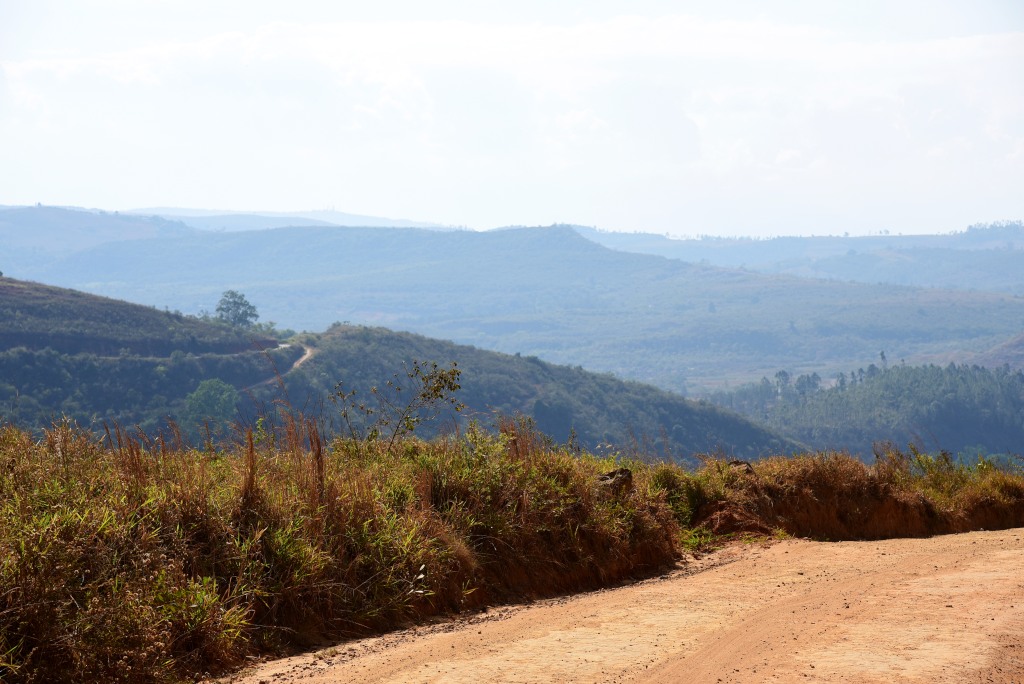
I am happy to be back in San Gil, a small city with far more character, history and activity than any of those small towns in the area. I huddle along the sidewalk sucking on my maracuja popsicle (so much for the day’s aspirations), squeezing against the walls on the narrow sidewalks in an effort to not get hit by passing cars.
I would like to stop in the bakery on Carrera 9 that I visited yesterday for another guanabana juice to assuage the dehydration, but all tables are occupied. There are tables free in the Pasteleria on the far side of the plaza, but the owner is aloof and not in a good mood.
The last hours of daylight are spent writing, and then it is time to hunt down a gym. After a lengthy diatribe in broken Spanish the young hotel receptionist is forced to listen to, it turns out that there is a great gym – right across the street. That in and of itself is a very good reason to stay at this hotel if a future occasion presents itself. I would be happy to return to San Gil, except that it is a long and arduous journey from anywhere in western Colombia, where I am hopefully heading next week, bringing the initial chapter of my journey to Colombia to a close.
The gym is full of the usual shoddy equipment, too small, rickety, cables about to snap, with flimsy weights, and all too close for comfort. The usual gym rats are present, young men who obviously spend all their free time here, but are clearly self-conscious, the young men who are half the size and spend much of the their time staring at the bigger men, and the women engrossed in their cardio and moderate weight routines, who couldn’t care less what the men do, and are in fairly stunning shape. Well, all those incredible women on the street can’t just have been gifted with the bodies they have …
The final struggle of the evening: where to eat. It is late, and going out for food at this time is always a problem. I weave around the centre of town, and it is the usual: overpriced restaurants that are closing, pizza joints that make terrible pizza, hamburger joints that make terrible hamburgers, and greasy pollo asado places.
Around and round I go, but it is getting later, and the longer I take, the worse it will get. COP $16,000 is a lot to be paying for a hamburger at the Lesa outlet a few blocks from my hotel, but the burger isn’t completely off the mark, despite the flimsy bun.
I definitely should be thinking about returning to the AirBnB format, so that I can cook my own dinners and not have to put up with this ongoing search for places to eat in the gastronomic desert of small-town Colombia.

